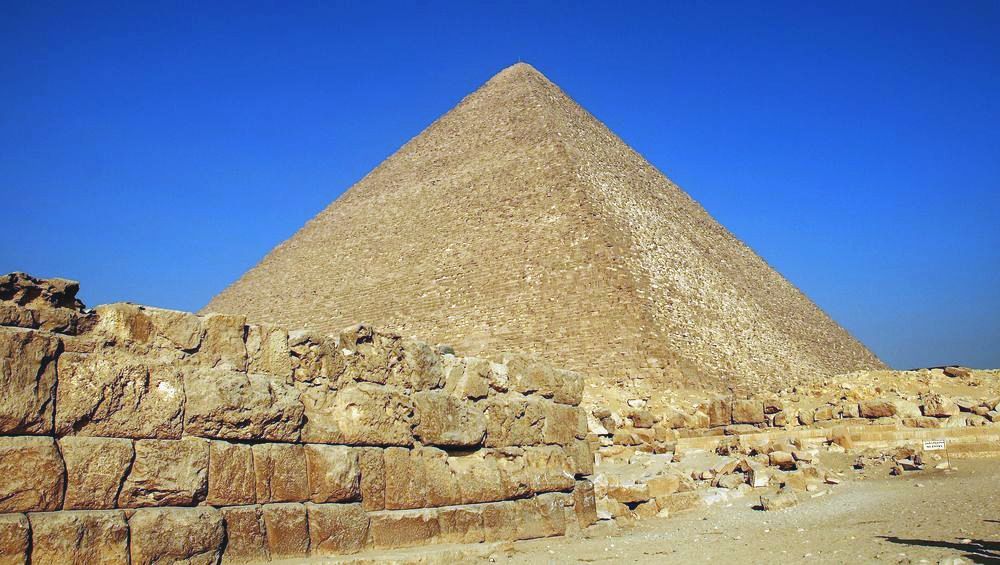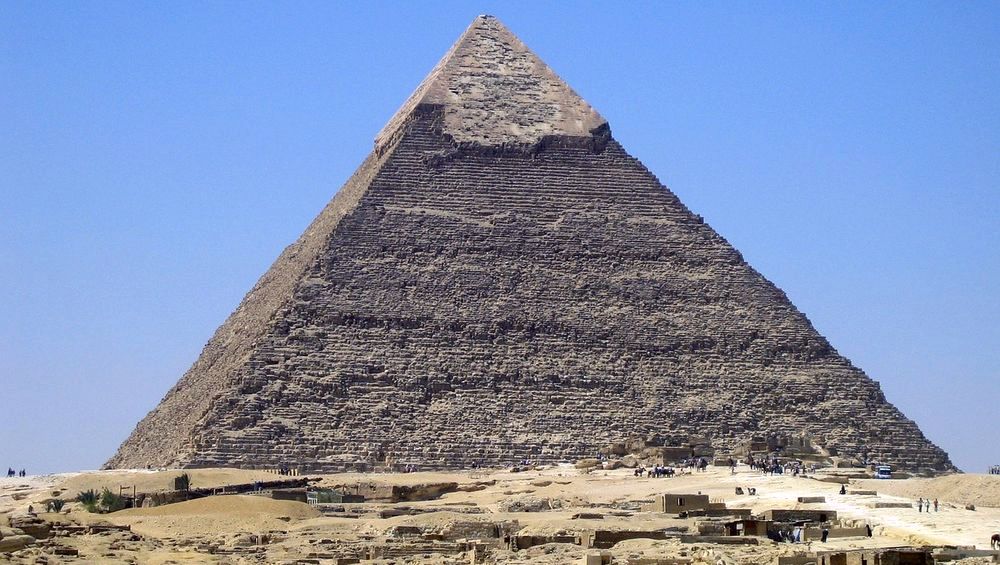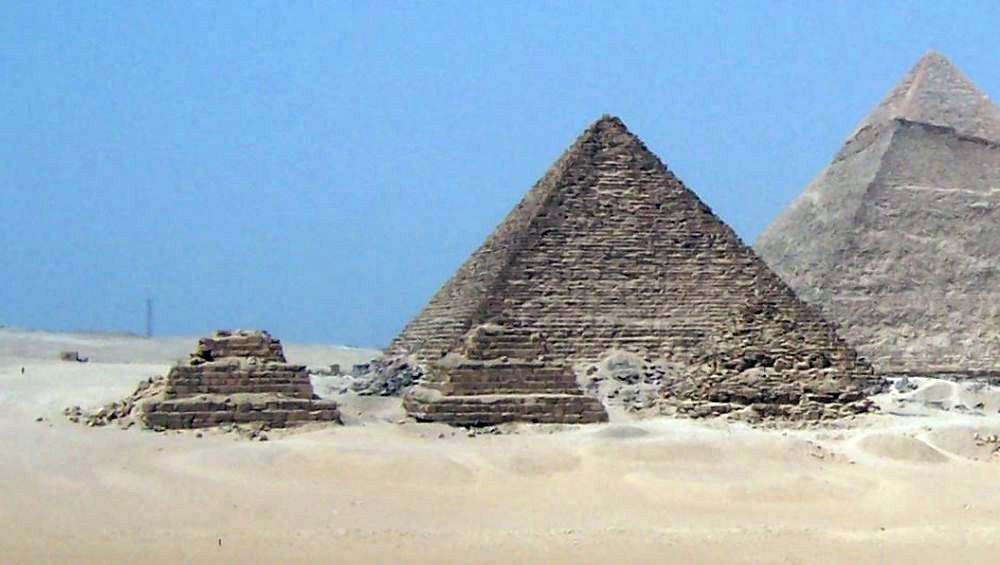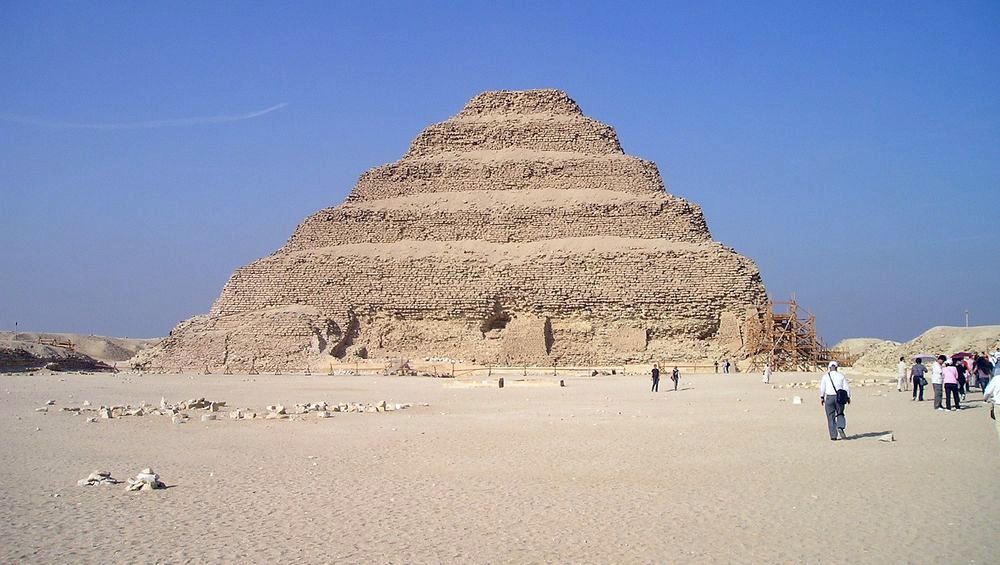When we look at the three main pyramids of the Giza plateau, we are surprised to see that Khafra is higher than Khufu, despite the fact that we learned the opposite ... In fact, it is a optical illusion because the pyramid of Khafra is on a raised rocky base which makes it seem higher than it really is, but if we measure them, we see that it is that of Khufu, his father, which is the highest.
That of Menkaure, it is smaller, like the other pyramids of Egypt.
When we want to know the dimensions of a historic building, we must ask the question of the unit of measure, because if today the meter is almost universally admitted, at the time of ancient Egypt the population measured in royal cubits, the length of which varies slightly in time but which is between 0.5 and 0.6m. The dimensions of the pyramids are therefore, for the most part, multiples of one cubit.
Here is the list of some of these pyramids with their dimensions.
Pyramid of Khufu
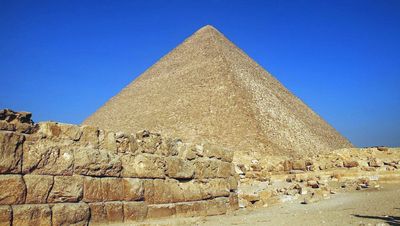
Pyramid of Khufu
The pyramid of Khufu is the largest of all the pyramids of Egypt. It is the highest, but also the largest and the one with the largest volume. It has long remained the largest structure ever built by man.
| Characteristics | Measures |
| Initial height | 146,60 m |
| Actual height | 138,00 m |
| Length of the South side | 230,45 m |
| Length of the North side | 230,25 m |
| Length of the West side | 230,36 m |
| Length of the East side | 230,39 m |
| Floor area | 5,29 ha |
| Base horizontality | Difference of 21 mm |
| Volume | 2 592 350m3 |
| Area | 53 055 m2 |
| Tilt | 51°50'34", a height / width ratio of 14/11e |
| Measure the Northeast angle | 90° 3' 2" |
| Measure the North-West angle | 89° 59' 58" |
| Southeast angle measurement | 89° 56' 27" |
| Measuring the Southwest angle | 90° 0' 33" |
The length of each side is, to a few centimeters, identical. This is not insignificant since it corresponds to 400 cubits, a unit of length in progress at the time of ancient Egypt. A royal cubit was 0.577m at that time, which is confirmed by the height of the pyramid, 147m, 280 cubits. In ancient Egyptian measure, the pyramid is therefore 400 cubits per side by 280 high.
Mathematically there is a relationship between the length of the base and the height of one side: 1.25, a ratio perfectly mastered by the manufacturers, of course.
Learn more about the pyramid of Khufu
Pyramid of Khafra
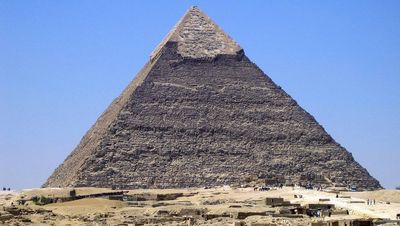
Pyramid of Khafra
Wider than the pyramid of Khufu but lower and less voluminous, the pyramid of Khafra has in common with that of Menkaure to have retained some of the coating of which it was adorned formerly.
| Characteristics | Measures |
| Initial height | 143,87 m |
| Actual height | 136,40 m |
| Length of one side | 215,16 m |
| Volume | 2 211 096m3 |
| Tilt | 53°07'48", a height / width ratio of 4/3rd |
Learn more about the pyramid of Khafra
Pyramid of Menkaure
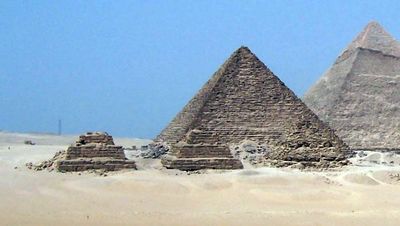
Pyramid of Menkaure
The smaller pyramid of Giza does not have a very square base, it is very slightly rectangular. Much smaller than the other two since they are 2.5 times its height, it is especially nearly 10 times less bulky!
| Characteristics | Measures |
| Height at the origin | 66 m |
| Current height | 65,5 m |
| Length of the sides | 104,6 m and 102.2 m |
| Volume | 235 183m3 |
| Tilt | 51°20'00'' |
Learn more about the pyramid of Menkaure
Pyramid of Djoser
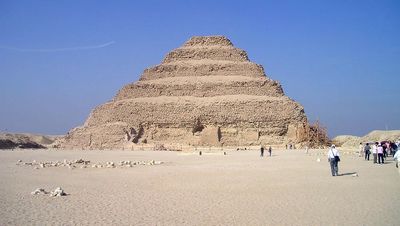
Pyramid of Djoser
Djoser was a Pharaoh of the Third Dynasty. His tomb is remarkable in that it is a link between the royal burials of the first dynasties, the mastabas, and the monumental ones of the Fourth Dynasty, on the Giza plateau. It is a step pyramid which is actually a succession of improvements to the mastaba to be used as burial.
| Characteristics | Measures |
| Initial height | 62 m |
| Lenght of one side | 125,27m and 109,12m |
| Volume | 330 4003 |
| Tilt | 84°, chaque degré |
Learn more about the pyramid of Djoser






